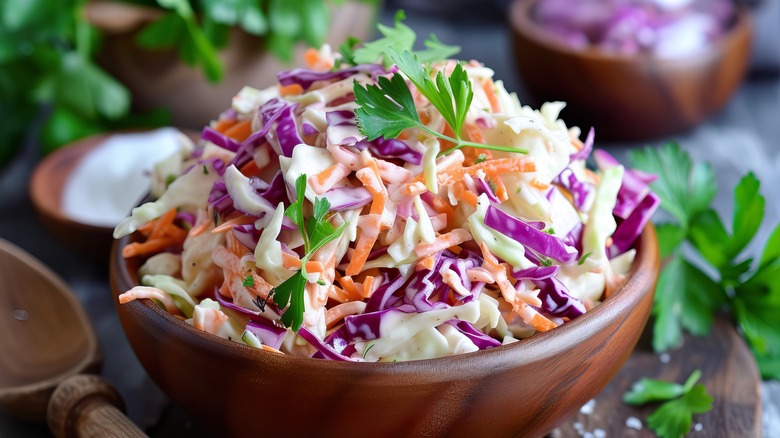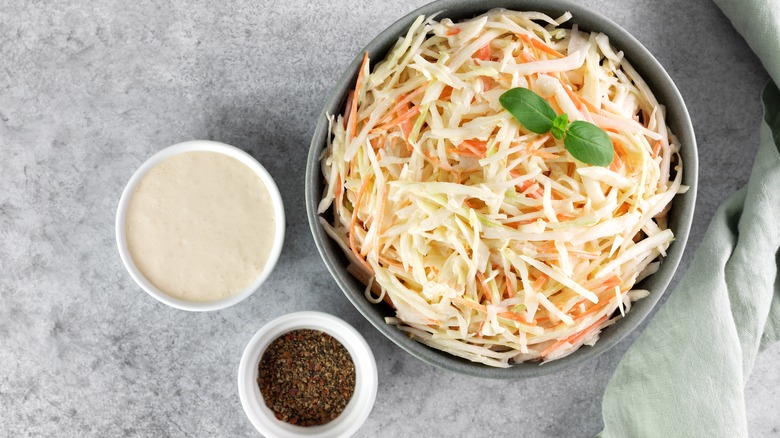What Exactly Is Coleslaw Dressing Made Of?
Coleslaw is a classic summer side dish known for its creaminess and tangy flavor. It always makes appearances at cookouts and barbecues, but despite its popularity, many home cooks find themselves wondering just exactly how it is made and what gives it its signature flavor. The answer is coleslaw dressing, which is typically mixed with shredded cabbage and carrots to create the iconic summer salad. Luckily, coleslaw dressing is made using just a few simple ingredients.
A basic recipe will use mayonnaise, vinegar, salt, sugar, and spices. The rules for this condiment are not hard and fast though. Some dressing recipes use honey or maple syrup instead of sugar, and there are multiple types of vinegar that can be used. Although pre-made store bought coleslaw is definitely convenient, making coleslaw dressing at home is worth the effort. Homemade coleslaw dressing can be adjusted to suit personal tastes with the help of adding or changing a few ingredients. For example, coleslaw dressing can be made spicier for a side dish with some heat, or more vinegar can be used to increase the sharpness of the dressing's flavor.
The key components of coleslaw dressing
Mayonnaise makes up a good portion of coleslaw dressing, so choosing a good tasting brand is important (note: low-fat mayonnaise can also be used). Some variations replace half of the mayonnaise with sour cream for a thicker, richer result. Others suggest using plain Greek yogurt instead for a lighter but tangier option. Be sure to use Greek yogurt and not regular yogurt if going that route.
The other major ingredient in coleslaw dressing is vinegar. Apple cider vinegar is the most popular choice, although other variations like white wine vinegar or red wine vinegar will work too. Typically, the ratio is 2 tablespoons of vinegar for every cup of mayonnaise. From there, it can vary quite a bit. The addition of lemon juice will give it more bite and tang. Meanwhile, Dijon mustard or peppercorns can give it a hint of heat. Other popular additions include honey, poppy seeds, and celery seeds.

